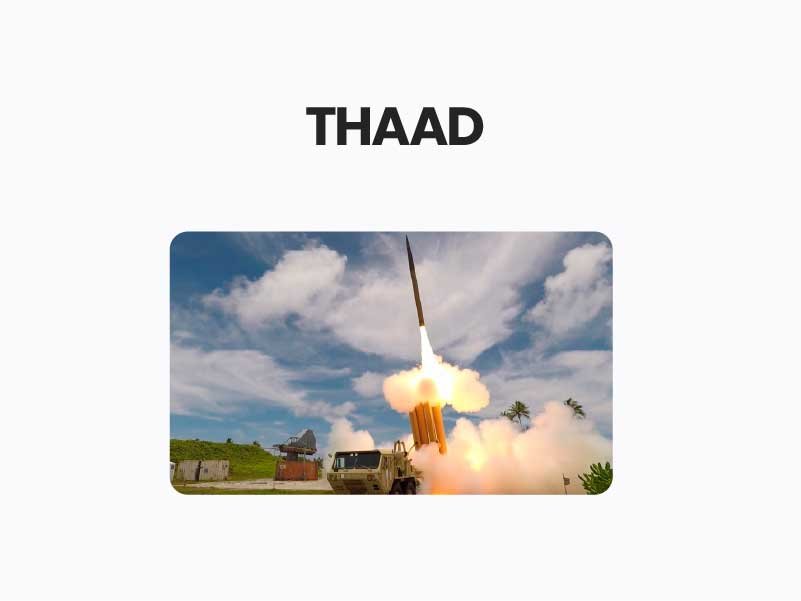
Theatre High Altitude Area Defense THAAD – Missile System
The THAAD terminal (formerly theatre) high-altitude area defence missile system is an easily transportable defensive weapon system to protect against hostile incoming threats, such as tactical and theatre ballistic missiles, at ranges of 200km and altitudes of up to 150km.
- The THAAD terminal (formerly theatre) high-altitude area defence missile system is an easily transportable defensive weapon system to protect against hostile incoming threats, such as tactical and theatre ballistic missiles, at ranges of 200km and altitudes of up to 150km.
- THAAD system provides the upper tier of a ‘layered defensive shield’ to protect high-value strategic or tactical sites such as airfields or populations centres. The THAAD missile intercepts exo-atmospheric and endo-atmospheric threats.
- The sites would also be protected with lower and medium-tier defensive shield systems, such as the Patriot PAC-3, which intercepts hostile incoming missiles at 20 to 100 times lower altitudes.
- THAAD system has maintained a 100% success rate over its last 16 intercept tests since the beginning of production. The system used a government-developed remote launcher kit in its 16th attempt in August 2019, for the first time, to extend the range of the defended area.
THAAD- China:
- China has issued a statement reiterating its long-standing objections to the presence of the US THAAD missile defence system in South Korea overnight operation to bring in new, replacement interceptor missiles to the US base in South Korea.
- China has been objecting to the defence system since it was first deployed in South Korea three year ago, causing a deterioration in ties between the two countries.
South Korea-China:
- In South Korea, the THAAD missile defense system is operated by the US army stationed in the country.
- The US had previously announced that the deployment of this missile defense system was a countermeasure against potential attacks by North Korea, particularly after the country had engaged in testing ballistic missiles.
- In 2017, matters escalated in the Korean Peninsula after North Korea test fired a few missiles in the direction of US bases in Japan. Following this incident, the US amended its plans and moved the systems to its army base in Osan, South Korea while the final deployment site was being prepared.
- These moves by the US and by extension, South Korea, particularly angered China. For a while the dispute has temporarily subsided, if not resolved. However, with the latest developments, it appears the controversy has resurfaced.
China opposing THAAD in South Korea:
- China’s opposition has little to do with the missiles itself and is more about the system’s inbuilt advanced radar systems that could track China’s actions.
- The controversy also has much to do with the geo-politics and complex conflicts in East Asia, with the US having a presence in the region particularly through its many military bases in Japan and South Korea.
- China believes the US exerts influence over South Korea and Japan and may interfere with Beijing’s long-term military, diplomatic and economic interests in the region.
- China had issued a statement urging the US not to harm bilateral relations between Beijing and Seoul.
- The US and South Korea have consistently maintained that these missiles are only to counter potential threats by North Korea.
- South Korea also issued a statement saying the number of missiles had not increased, but had only been replaced with newer versions.
China could change its approach to North Korea, making this THAAD business less necessary in the short-term.
Source: The Indian Express

